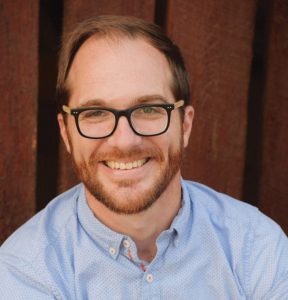This story has such a dynamic voice. I’m reminded of Donald Barthelme. How did you zero in on that bouncy narrative style, that flippant attitude that turns charmingly empathetic?
A lot of my writing tries at a sort of bouncy weirdness. Maybe it’s that I process sentences in my head this way, kind of in irregular rhythms, if that makes sense, and when writing in first person I rarely ever separate my inner monologues from what I’m putting to paper—the kind of thing we usually tell composition students to avoid. It’s just more natural to me, and I feel less self-conscious. I’ve been revising a longer manuscript with a similar narrative style; my protagonist/narrator there has low self-esteem, a degrading temperament, and a lot of my real-life quirks (good and bad, irritating and more). For me this sort of narrative works, especially for the characters I’m interested in at the moment. From the longer manuscript this voice carried over to my short piece, and it’s something I want to continue to evolve and improve on.
I worry too that the style might not be taken very seriously. But voice can be a difficult thing for me to think about while I’m writing, and if I think too much about vernacular or structure or seriousness of tone or whatever, then I start feeling self-conscious. The more beautiful I try to sound, the more silly I feel, and I personally don’t have much fun when I’m trying to make something mundane into something beautiful.
What’s your favorite voice-driven story and what makes the voice work?
I’m stuck between Erland Loe’s Naïve. Super and George Saunders’s title story in Pastoralia. Loe does this thing with his sentences—and man are they simple, weird little sentences—that tells you more about what the narrator is like mentally than could ever be done through exposition or circumstance. For Saunders you get a feeling that the reader takes his characters more seriously than the characters themselves; at least I never get the feeling that the protagonist is being observed in the sense that a character can be observed by the reader. It’s like seeing a person in their natural state, hearing their thoughts exactly as they’d be if they’d never considered the possibility that someone (the reader) might be listening. This gives the reading a sort of urgency that you wouldn’t expect from a story about a living history exhibit.
This piece hinges on humor, at least initially. What lifeblood does humor give this story? How do you know when it’s working, when others will find it funny?
The problem with being funny is that I have no idea when I’ve written something that’s funny. My sense of humor doesn’t translate very well to words. In grad school I was writing a lot of grim-dark stuff because I wanted to be taken seriously, but later I found that the weirder a story is, the more bizarre, the less I try to mean something (anything!), the more likely I am to immediately take to it, and derive meaning. And find the humor in it too, I guess.
From absurdist broomstick to crushing solitude, this story’s beginning swings wildly to its end, and does so surprisingly organically. Did you know you’d get to this ending early on? What’s the process like, traveling along the zigzag trajectory from A to Q?
For longer works I try to have an ending in mind. Just something to move toward. I don’t care if I get to that particular ending or not. For a flash story like this I give my character(s) a problem (I really need to know that I’ll be accepted/loved by my family despite my disability), and I’m not really sure what direction I want to go in. I knew that I wanted there to be kids gawking at him, and I knew that I wanted the story to end with acceptance, but I didn’t know how this would look. I try to play this out as it would happen in real life; I write images I like into the story and try to color the ending with something mundane, like sweeping the porch.
Sometimes it works better than others. For a short piece like this, I feel that the more I try to end it, the less gracefully I’m able to pull it off.
Why a broomstick?
The broomstick started as a personal writing exercise. Like I said, I’d just come off of working on a novel-length thing. I’d also been thinking about the next novel-length thing. I’ve been having trouble writing short stories. Sometimes I’m scared I’m going to one day run out of weird things to write about—I’m not talking about writer’s block, but maybe lack of interest. So writing flash fiction has always been a great help to me. A few years ago I could barely write a word of a traditional story. And then I tried to write a novella in flash fictions. Flash wasn’t exactly my comfort zone, but I had a ton of fun and I felt a lot better about myself and I was able to get back into routine. Long story short, in between longer projects I work on a lot of flash in a sense to clear my cache.
But this doesn’t answer your question. I was eating a sandwich at a restaurant in downtown Hattiesburg and saw a waitress sweeping near the counter and thought about how weird it would be if she had a broom for an arm. Not what you wanted to hear, I know.




 The core workshop of SmokeLong Fitness is all in writing, so you can take part from anywhere at anytime. We are excited about creating a supportive, consistent and structured environment for flash writers to work on their craft in a community. We are thrilled and proud to say that our workshop participants have won, placed, or been listed in every major flash competition. Community works.
The core workshop of SmokeLong Fitness is all in writing, so you can take part from anywhere at anytime. We are excited about creating a supportive, consistent and structured environment for flash writers to work on their craft in a community. We are thrilled and proud to say that our workshop participants have won, placed, or been listed in every major flash competition. Community works.